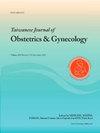台湾爱婴医院倡议的效益:与母乳喂养率的生态关系
IF 2.2
4区 医学
Q2 OBSTETRICS & GYNECOLOGY
引用次数: 0
摘要
目的本研究利用国家统计资料,评估台湾实施爱婴医院行动(BFHI)后母乳喂养的效益。资料与方法收集1、2、4、6个月母乳喂养率的行政统计数据。这些益处是用婴儿和母亲的健康结果来评估的,包括婴儿和新生儿死亡率、婴儿医疗使用、诊断时的平均年龄以及乳腺癌和卵巢癌的发病率。我们还探讨了母乳喂养率与5年和10年后母亲长期癌症状况之间的关系。采用Pearson相关分析和一般线性回归分析母乳喂养率与母婴结局的生态关系。结果婴幼儿死亡率与母乳喂养率呈负相关。母乳喂养率与传染病医疗使用率呈显著负相关。就长期产妇结果而言,5年和10年后诊断出乳腺癌和卵巢癌的平均年龄增加了母乳喂养率的1%。虽然观察到乳腺癌和卵巢癌的发病率与母乳喂养率之间存在显著的正相关,但在10年的时间里,这种关联往往会减弱。结论本研究显示了BFHI后儿童及其母亲健康效益的生态趋势。需要进一步的个人研究来详细评价母乳喂养的重要性。本文章由计算机程序翻译,如有差异,请以英文原文为准。
Benefits of the baby-friendly hospital initiative in Taiwan: Ecological correlation with breastfeeding rate
Objective
This study utilized national statistics to evaluate benefits of breastfeeding through the implementation of the Baby-Friendly Hospital Initiative (BFHI) in Taiwan.
Materials and methods
Administrative statistics on 1-, 2-, 4-, and 6-month breastfeeding rates were collected. The benefits were evaluated with health outcomes for infants and mothers, including infant and neonatal mortality, infant medical use, mean age at diagnosis and the incidence of breast and ovarian cancer. We also explore the association between breastfeeding rate and long-term maternal cancer status defined by the statistics for later 5 and 10 years. Pearson's correlation analysis and general linear regression were applied for the ecological relationship between breastfeeding rate and infant or maternal outcomes.
Results
A negative correlation was observed between infant or neonatal mortality and the breastfeeding rate. A significant inverse correlation was observed between the breastfeeding rate and medical usage for infectious diseases. In terms of long-term maternal outcomes, the mean age of breast and ovarian cancer diagnosis for 5 and 10 years later was increasing by an 1 % increase in the breastfeeding rate. Although a significant positive association was observed between the incidence of breast and ovarian cancer and the breastfeeding rate, this association tended to weaken when the 10-year period was examined.
Conclusion
The study showed ecological trends for health benefits on children and their mothers after BFHI. Further individual level studies were required for detailed evaluation on the importance of breastfeeding.
求助全文
通过发布文献求助,成功后即可免费获取论文全文。
去求助
来源期刊

Taiwanese Journal of Obstetrics & Gynecology
OBSTETRICS & GYNECOLOGY-
CiteScore
3.60
自引率
23.80%
发文量
207
审稿时长
4-8 weeks
期刊介绍:
Taiwanese Journal of Obstetrics and Gynecology is a peer-reviewed journal and open access publishing editorials, reviews, original articles, short communications, case reports, research letters, correspondence and letters to the editor in the field of obstetrics and gynecology.
The aims of the journal are to:
1.Publish cutting-edge, innovative and topical research that addresses screening, diagnosis, management and care in women''s health
2.Deliver evidence-based information
3.Promote the sharing of clinical experience
4.Address women-related health promotion
The journal provides comprehensive coverage of topics in obstetrics & gynecology and women''s health including maternal-fetal medicine, reproductive endocrinology/infertility, and gynecologic oncology. Taiwan Association of Obstetrics and Gynecology.
 求助内容:
求助内容: 应助结果提醒方式:
应助结果提醒方式:


